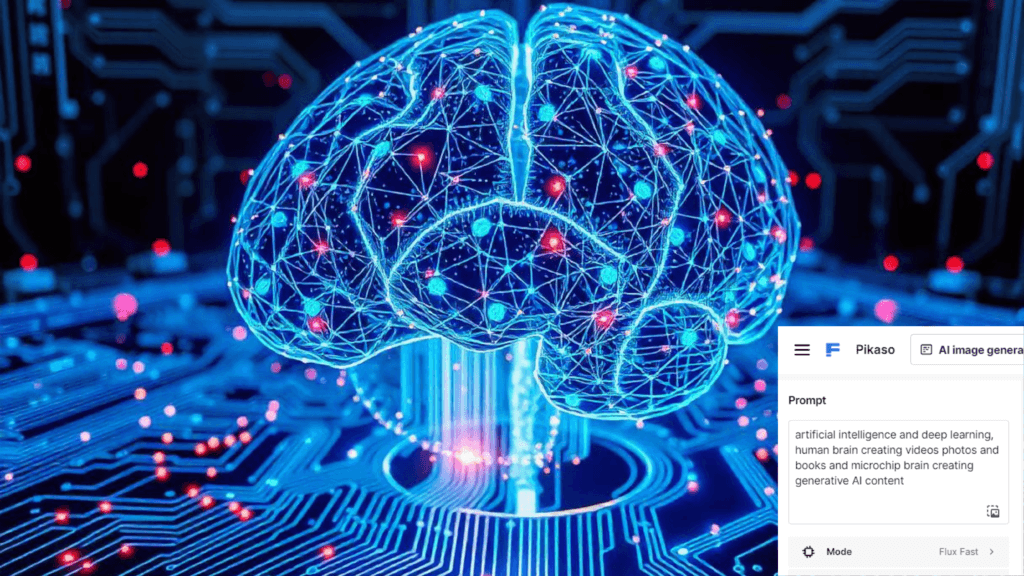I often come across numerous reels or shorts showcasing AI performing tasks that previously required human intelligence. Have you also noticed these videos? Which specific Gen AI model do you think can perform tasks exactly the way you envision them?

Artificial intelligence and its ever-evolving landscape include a topic of prominence that is Multi-Modal Prompting. Prompts are the instructions that we give to AI models and they provide us with output. As AI models become more advanced, their ability to process and generate data from different types of inputs—text, images, audio, and even video—has opened up new possibilities.
Keep reading and you will find some valuable tips to excel in your game! If you’re missing out on our previous blogs Read Here
UNDERSTANDING MULTI-MODAL PROMPTING
Multi-modal prompting is an advanced technique in artificial intelligence that involves using multiple types of input, or “modes,” to communicate with AI systems. To understand this concept, let’s break it down step by step. This article delves into the world of multimodal prompting, exploring its significance, applications, and future potential.
This approach allows for a more comprehensive and contextual understanding of the task at hand, enabling the model to generate more accurate and relevant responses.
First, let’s consider what we mean by “modes” in this context. In AI and human-computer interaction, a mode refers to a type of input or output. The most common modes include:
- Text: Written words and sentences
- Images: Pictures, photographs, or graphics
- Audio: Sound, including speech and music
- Video: Moving images, often with accompanying audio

Traditionally, when we interact with AI systems like chatbots or virtual assistants, we primarily use text. We type in our questions or commands, and the AI responds with text. This is a single-modal interaction, as it only uses one mode: text.
Multi-modal prompting, on the other hand, involves using two or more of these modes together to communicate with an AI system. This approach can provide a richer, more comprehensive way of conveying information and can lead to more accurate and nuanced responses from the AI.
Let’s look at some examples to illustrate how multi-modal prompting works:
- Text + Image: Imagine you’re using an AI to help identify a plant you saw on a hike. Instead of just describing the plant in words, you could send a photo of the plant along with a text question like, “What is this plant and is it poisonous?” The AI would then use both the image and your text question to provide a more accurate answer.
- Text + Audio: You might be learning a new language and want to check your pronunciation. You could send a recording of yourself speaking a phrase along with the text of what you’re trying to say. The AI could then analyse both your audio and the text to provide feedback on your pronunciation.
- Text + Video: If you’re trying to troubleshoot a problem with your car, you might send a short video of the issue along with a text description. The AI could analyse the video to see the problem in action while also considering your written explanation.
The power of multi-modal prompting lies in its ability to provide context and additional information that might be difficult to convey through a single mode. It allows the AI to draw insights from multiple sources, much like humans do when we process information from our various senses.
Working on multi-modal AI systems
Now, let’s dive a bit deeper into how multi-modal AI systems work:
- Input Processing: When you provide a multi-modal prompt, the AI system first needs to process each mode separately. It uses different neural networks specialised for each type of input. For example, it might use a convolutional neural network (CNN) for image processing and a transformer model for text processing.
- Feature Extraction: From each input mode, the AI extracts relevant features or characteristics. In an image, this might include shapes, colours, and objects. In text, it might include keywords, sentiment, and context.
- Fusion: The AI then combines or “fuses” the information from different modes. This is a complex process that involves aligning and integrating the features extracted from each mode.
- Reasoning: Using the combined information, the AI reasons about the prompt and generates a response. This response could be in a single mode (like text) or could itself be multi-modal.

Convolutional Neural Network (CNN): type of artificial neural network that’s used to process and analyze data, especially images. CNNs utilize three-dimensional data and incorporate layers that learn features through filter (or kernel) optimization, allowing them to identify and categorize visual patterns.
The benefits of multi-modal prompting are numerous:
- Improved Accuracy: By providing information through multiple modes, you’re giving the AI more context, which can lead to more accurate responses.
- Enhanced Understanding: Some concepts are difficult to explain in words alone. Multi-modal prompting allows for a more comprehensive communication of ideas.
- Accessibility: For users who might have difficulty with one mode of communication (e.g., typing), multi-modal systems offer alternative ways to interact.
- Natural Interaction: Humans naturally use multiple senses to understand the world. Multi-modal AI mimics this more closely, leading to more intuitive interaction.
However, multi-modal prompting also comes with challenges:
- Complexity: Multi-modal AI systems are more complex to develop and require more computational resources.
- Data Alignment: Ensuring that information from different modes is properly aligned and integrated can be challenging.
- Potential for Confusion: If the information in different modes contradicts each other, it can lead to confusion for the AI.
As AI technology continues to advance, multi-modal prompting is becoming increasingly common and sophisticated. We’re seeing it in various applications, from virtual assistants that can see and hear, to AI-powered healthcare tools that can analyse medical images alongside patient descriptions.
Future of Multimodal Prompting
The future of multimodal AI holds tremendous potential, with some promising developments already on the horizon.
- Improved Model Efficiency: As AI models continue to evolve, we can expect more efficient multimodal systems. Techniques like zero-shot learning and few-shot learning will allow models to generate accurate outputs even with limited data. This will make multimodal prompting more accessible to smaller businesses and individual creators.
- Real-Time Multimodal Interaction: The rise of real-time AI systems will likely result in dynamic, on-the-fly multimodal interactions. Imagine asking an AI to generate a live video feed based on text and images while you provide voice commands in real-time.
- Increased Personalisation: Multimodal prompting will pave the way for more personalised experiences. By taking multiple input forms, AI systems can better understand user preferences and deliver customised content or solutions, whether it’s for entertainment, education, or healthcare.
- Ethical Considerations: As multimodal AI becomes more integrated into daily life, there will be growing concerns around ethical usage. Misuse of AI-generated content, deepfakes, and privacy issues will need to be addressed to ensure responsible use of multimodal prompting technologies.
Tips:
For beginners starting to explore multi-modal prompting, here are a few tips:
- Start Simple: Start by combining two modes, like text and image.
- Be Clear: Ensure that the information you’re providing in different modes is clear and relates to the same query or task.
- Experiment: Try different combinations of modes to see which works best for your specific needs.
- Consider the AI’s Capabilities: Not all AI systems can handle all types of multi-modal inputs. Check what the system you’re using is capable of.
In conclusion, multi-modal prompting is an exciting frontier in AI interaction. It allows for richer, more natural communication with AI systems, mimicking the way humans process information from multiple senses. As this technology continues to evolve, we can expect to see even more innovative and intuitive ways of interacting with AI in the future.
Follow us on LinkedIn to never miss on AI updates.
